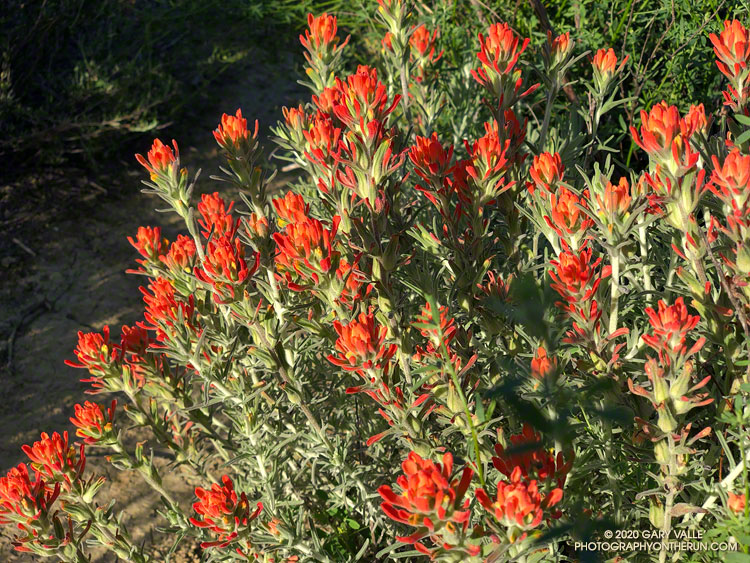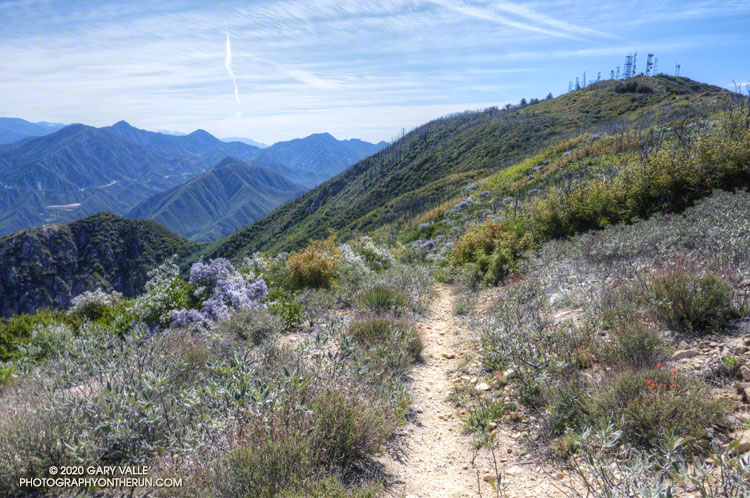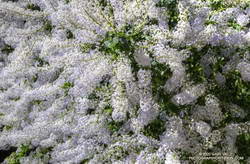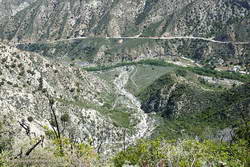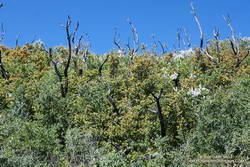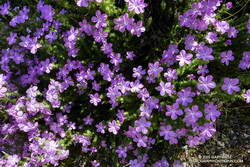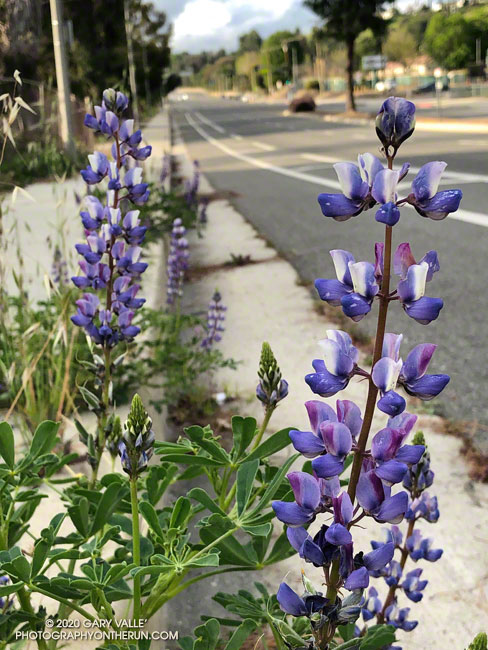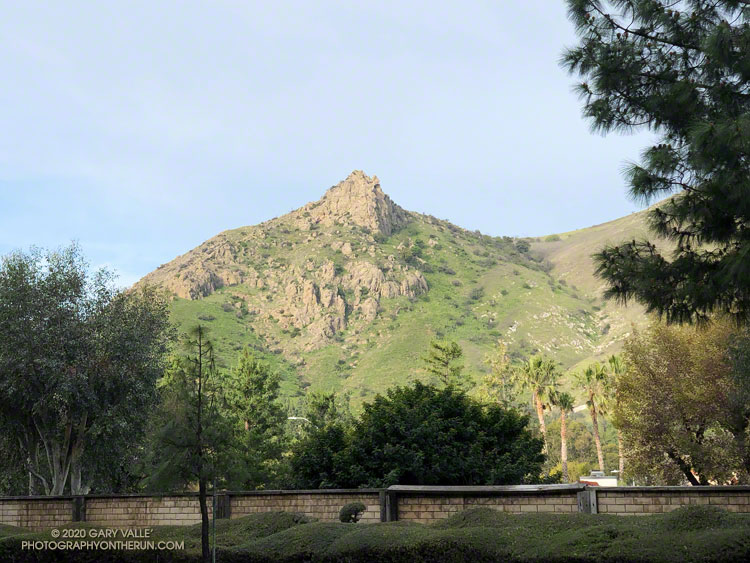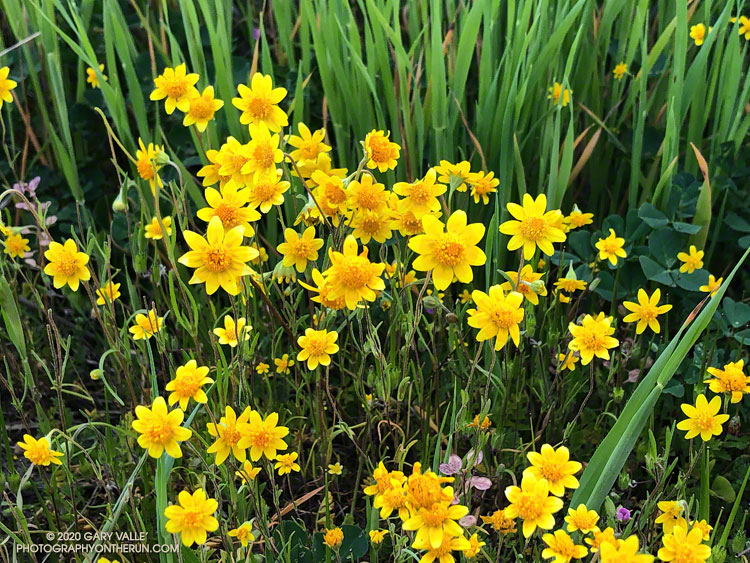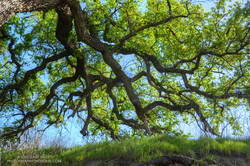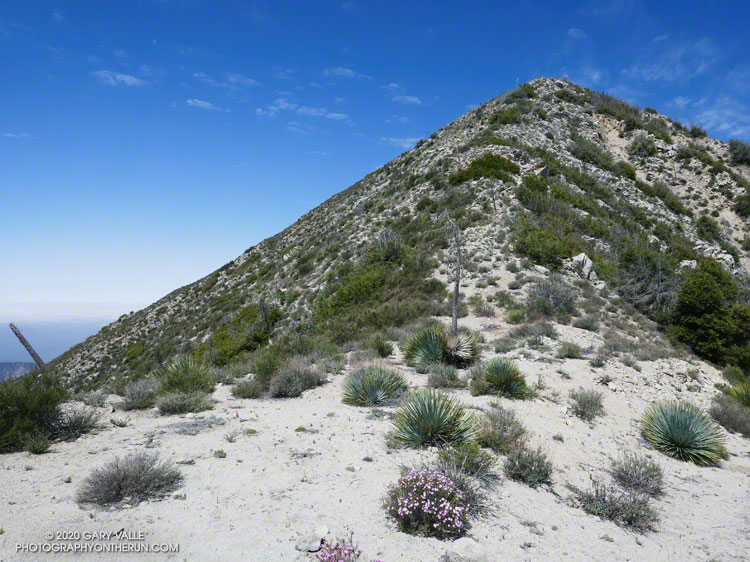
“Condor Peak-Elevation 5430 ft. – 1 Day
By Vogel Canyon Trail.
Drive Big Tujunga Canyon road to Vogel Flat
Ranger Station and park auto. Hike trail starting
opposite station for short distance up Vogel Canyon,
then around mountain slope west of Big Tujunga
Dam to summit of Condor Peak. Return by
same route. Carry water and cold lunch. No fires
permitted. Total hiking distance, 12 miles.”
— Trails Magazine, VOL 1 NO. 4, Trail Trips, Autumn 1934
The relocation of Big Tujunga Canyon Road in the 1950s shifted the starting point, and some other details have been updated, but the route from Vogel Flat to Condor Peak is pretty much the same as it was in 1934.
It’s telling that hikers of that era would have estimated the round-trip distance to Condor Peak at 12 miles. This was probably a “feels like” estimate of distance, based on time. The mileage in the description is far less than the presently accepted distance of 15.5-16.0 miles. Back then, the trail would have been relatively new and in better condition than it is now. Even so, they must have been fit and fast!
The “Vogel Flat” trailhead for the Condor Peak Trail is now a little to the east and above its original location, and is not obvious. If traveling up-canyon on Big Tujunga Canyon Road, it is just past Vogel Flat Road, directly across the highway from the second turnout on the right.
Note: Even in the best of circumstances, hiking, running, or riding a mountain trail involves risks. The nature of the terrain this trail navigates is such that the risk from falling while running, hiking or riding, crossing washouts, and from heat-related illness is high. There are some sketchy sections with large drop-offs. In particular, below Fox Mountain there was a very exposed washout at the top of a steep sandy chute that required extra care to cross. (The trail was repaired in 2021-2022.)
As was the case last week on the Stone Canyon Trail, it looked like some sections of the Condor Peak Trail had been trimmed in the last year or two. And like the Stone Canyon Trail, the trailwork ended partway to the peak. In this case, it ended about two-thirds of the way to Condor Peak, as the trail turns northwest and contours around Fox Mountain. The bushwhacking wasn’t nearly as bad as on the Stone Canyon Trail, and things improved once up on Fox Divide.
Prior to this outing, I’d only attempted to do the peak in December and January. There is almost no shade, and the trail traverses several south and south-east facing canyons that act like solar ovens. The last time I did Condor Peak, in December 2007, the overnight low at Clear Creek had been 34 degrees and the high 52. That day was chilly in the shade, but about right in the sun. Today, the overnight low at Clear Creek was 63 degrees and the high 75. It was warm, but with an early morning start, was OK.
It was a relief to finally reach Fox Divide. In 2007 we climbed Fox Mountain from this point. Today I was running alone and thought the ascent of Fox, as short as it is, might result in me running short of water. I didn’t do Fox, and as things worked out, I finished the last of my water about a half-mile from the end of the run. (There is a spring, but the flow was just a trickle.)
I had not reread my notes from 2007 and had conveniently forgotten the nature of the final 1.5 miles between Fox Mountain and Condor Peak. I won’t spoil the adventure here.
There was a fairly well-defined path up the steep, east ridge of Condor Peak. As in 2007, the red register container was on the western summit. The eastern summit, marked by a robust yucca, is about the same height. Viewed from the summit of Condor Peak (5440+’), Mt. Lukens (5074′) was clearly lower in elevation.
Like last Sunday on the Stone Canyon Trail, I did not see anyone on the way up or down the Condor Peak Trail. Ironically, just a couple miles away, there were over a hundred cars parked along Big Tujunga Canyon Road at the Gold Canyon/Trail Canyon access.
Here’s a 3D Cesium interactive view that shows a GPS track of my route up and down the Condor Peak Trail to Condor Peak. The view can be zoomed, tilted, rotated, and panned. Placemark and track locations are approximate and subject to errors.
And here are a few photos taken along the way.
Some related posts:
– Condor Peak and Fox Mountain Adventure Run
– Condor Peak Trail Run
– Back to the Stone Canyon Trail

